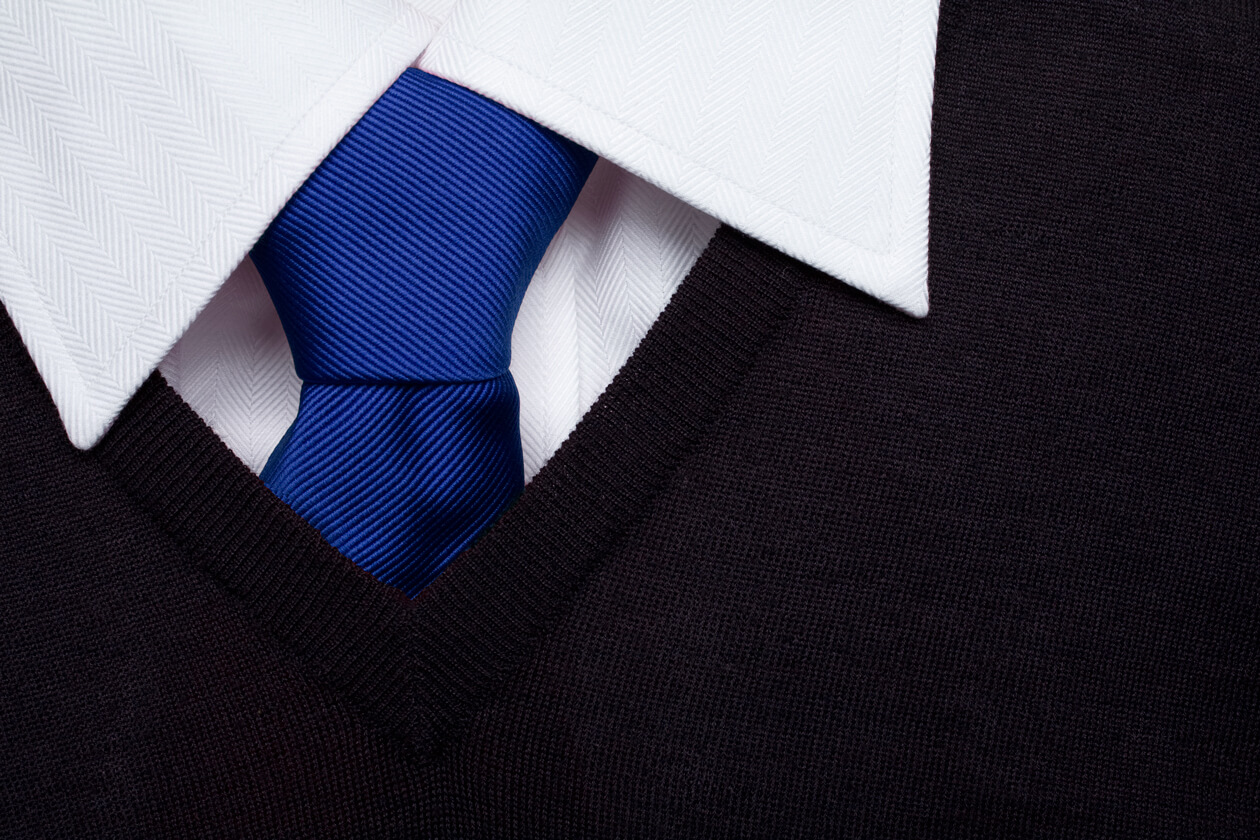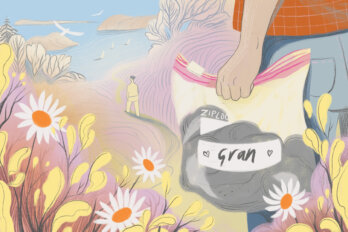
The closest thing to samizdat culture I ever experienced at St. Michael’s College School was in my grade-eleven English class when, during the final autumn of the twentieth century, we were assigned Lord of the Flies. That fall, I played on the football team, the junior unit of the Kerry Blues. It was a tough season for the squad. Older boys on the senior team had stripped a rookie naked and tied him to one of our goalposts, in what had been characterized in the papers as an initiation or hazing gone south.
Listen to an audio version of this story
For more Walrus audio, subscribe to AMI-audio podcasts on iTunes.
It feels now like a subversive act by our English teacher to have us read, in the middle of the bad press the school was getting, William Golding’s novel. The enterprise of an all-boys Catholic school, after all, didn’t feel all that different from that of the well-heeled inhabitants of Golding’s desert island—an experiment in male self-governance. Just as in the story, my classmates and I were waylaid from the mainland of the modern world, where there were young women and openly gay men and where reproductive rights were enshrined in law. On our little island, overseen by an order of priests called the Basilians, no women held leadership roles, and many of the men in charge were alumni of St. Michael’s, tough-guy Catholics aging into their authority to become what the book called “bigguns.” The central question of Lord of the Flies, the teacher explained, was whether boys, if left adrift, would become Ralph, the decent democrat who protects his charges, or Jack, who seduces his cohort into barbarism, superstition, and madness.
I won’t forget our teacher’s ironic, impassive expression as we came to the novel’s final image. Just as Jack, the sociopath, is about to murder Ralph, who believes “the rules are the only thing we’ve got,” a naval officer arrives, and their bloodlust evaporates at his feet. The officer is “moved and a little embarrassed” that these good, privileged boys, left to their own devices, would descend into savagery and so turns away, “allowing his eyes to rest on the trim cruiser in the distance.”
Almost twenty years later, St. Michael’s still has a problem with savagery. My alma mater returned to the headlines weeks ago when eight students, including players from my former football team, were expelled for what the school at first called “incidents” that were “in clear violation of our Student Code of Conduct.” When two videos surfaced, the police had another term for what happened: child pornography. According to Global News reporters who watched the videos, one showed a brutal attack with the victim “struggling on the ground with his pants down as the boys around him attempt to sodomize him with a broomstick.” Police have since charged six boys in connection with the alleged group sexual assault. It was Christie Blatchford who first reported that the boy who was set upon was not a member of the football team—he’d knocked on the locker room door, looking for a friend who’d promised him a ride. Now the school community, and the wider public, is asking: How could something like this happen at such a prestigious institution, in 2018? Of course, it’s the wrong question. The better one is: Why is anyone surprised?
From the moment I stepped foot on the St. Mike’s campus in grade nine, I braced myself. My uncles and my dad, who all went to the school, warned me that I’d be “ninered”—stuffed into a locker, bullied by older boys and even by teachers. I was told to consider such attacks a rite of passage. The point of being ninered was for the freshman to fit in, to discover that delicate balance between submission and resistance that was essential to assuming his place in a society like the one at St. Michael’s. The trick was to be not so abject in your hazing to elicit pity but not so strident in your self-defence to inspire contempt. And then you could pass along that misery, and that power, to the boys behind you, like a patrimony.
It was a Catholic school after all—our go-to textbook was the Catechism. Just as in the sacrament of confession, where penance helps you atone for all the wrongs you’ve committed, freshmen learned all the ways they could—and would—invite punishment from faculty. You couldn’t decide for yourself what to wear to school—you had a uniform, and if your top button was undone or your tie a little loose, you’d get a detention. If you weren’t cleanly shaved, they’d send you to the office of the vice-principal, who would open a drawer and give you a razor that he’d make you use. I almost failed grade-nine gym because I kept forgetting to pack white socks, and so wore my black ones. My mother had to beg my teacher to give me a D.
Many rules of the culture were transmitted almost imperceptibly, over the air. One of the reasons I played football was to counterbalance the reputational harm incurred by my other extracurriculars, the ones I really cared about. I was in the plays and the musicals, wrote poems for the literary journal, and played in the concert band and the jazz band, each of which would get you called a faggot. By the time I quit football in grade eleven—I screwed up my back in a tackle and couldn’t practice or play without swallowing a handful of Robaxacet—I despised St. Mike’s, its vision of masculinity, and the sort of “good men” the school was trying to shape us into. Our morality was regressive—a reactionary instruction mainlined from the Catholic Church—and its values were often at odds with Canadian liberal democracy, or what was derisively referred to by some of the teachers at St. Mike’s as “secular culture.”
There was never talk of consent because premarital sex was, according to the school’s instructors, some of whom were celibate, a sin. And, even once you were married, you couldn’t wear a condom and your wife couldn’t take birth control—both imperilled your soul. We were instead taught something called the rhythm method, which involved a thermometer. Sodomy was evil for both participants. Abortion, a man explained to a room full of boys, was murder. Evolution was, we learned in religion class, merely a “theory.” And masturbation would prevent you from getting into heaven unless you came clean about it to a priest, in a dark booth divided by a curtain. If your marriage failed, you couldn’t get a divorce. We were told over and over about the “dignity of suffering.” When you took Communion at mass, it was the literal, very real, and not-at-all symbolic human flesh of Jesus Christ, which dissolved on your tongue like a sliver of butter riding its own melting on a skillet.
There was never any mention of what appeared to be a massive, multigenerational cover-up of the sexual torture of children in its care—reports of abuse by clergy were circulating in US as early as 1985—which might disqualify its leader from inveighing on sexual matters, or any moral ones for that matter. And there was never talk in history class about how, in the century that was coming to a close around us, the three main Fascist movements (Italian, German, and Spanish) were either movements of the Catholic right or, as in the case of the Third Reich, were effectively enabled and appeased by the Vatican.
Our team, in other words, had helped plunge the world into barbarism and violence. But there never seemed, to me, much circumspection about what to do if you happened to find a good Catholic behaving villainously. Instead, if you were ever troubled or confused, it was recommended you march straight to the chapel that stood at the heart of the school—Christ was there, strung up on his goalpost.
What I’ve just described was likely the same moral preparation of the St. Michael’s football players who have been charged with assault, gang sexual assault, and sexual assault with a weapon. The disturbing question isn’t simply what led at least one student to wield that broom handle, but why the others went along and filmed it and why it was eventually uploaded to social media. I remember that locker room. I remember how we often changed from our football gear back into our uniforms. I remember how the blazers bore the school crest over our hearts, a crest that adapted its motto from Psalm 118: Doce me Bonitatem et Disciplinam et Scientiam. “Teach me goodness, discipline, and knowledge.” Those virtues are the very business that St. Michael’s is in—to the annual tune of over $20,000 per student.
It remains the kind of inculcation, however, that the school clearly struggles to get right, given the number of alumni who have since come forward with similar stories of bullying and harassment—indeed, allegations of violent, sexualized hazing appear to date back to the 1980s, nearly a decade before I attended the school. These things keep happening at St. Michael’s because there can be no such thing as free moral thought in an institution that also teaches you about heresy.
A single-sex, single-ideology school like St. Michael’s not only allows Jacks to emerge but creates the social conditions for other boys to defer and conform when he flashes his brutality (In 2011, the journal Science published an article arguing that sex segregation “increases gender stereotyping and legitimizes institutional sexism.”) While I was at St. Mike’s, there were the guys who, finishing a test to their satisfaction, would declare they’d “raped it.” There were the bros who taped porn to the classroom door of Father Zinger, a modest priest. There was the dude who bragged about losing his virginity to “this tranny,” whom he said he’d paid. And there was the little shit who walked up to me in the locker room and threw a coin at my head for no reason at all, splitting my forehead and leaving a toonie-sized scar above my eye.
We were made into a buttoned-up, clean-shaven band of bigots and sadists. And I’m ashamed to say that, for a while, I followed along. Driven by dogma, St. Mike’s never figured out how to incentivize dissent. Seeing no other way through, I took the path of least resistance. I remember one religion teacher who inveighed against homosexuality and mused that it wouldn’t be so bad to assassinate a doctor who performed abortions. I never challenged him. What was the point of arguing for a woman’s right to choose with the guy who determined your grade? After a while, you lost the will to break rank, and then you lost the instinct for it, too, the dissident part of you desiccating like a redundant organ. You learned to embraced that dull, drugged feeling of having an institution think for you. St. Mike’s made me a coward. It wasn’t until university that I realized how low I’d been rendered.
And, just as at the end of Lord of the Flies, in which the navy cruiser anchored offshore reminds us that the civilized values that Ralph is defending are a facade, what did students find when their leaders at St. Michael came to their rescue? Obfuscation, equivocation, dissembling. There were conflicting accounts as to why it took more than a day for the principal to report the alleged sexual assault to the police. The school first said that there was no delay at all, but then-principal Greg Reeves—who, along with the president, resigned eight days after the allegations surfaced—said that he was protecting the victim by waiting to speak to his parents first, which took over twenty-four hours. What seems clear is that the police investigated only after media began reporting on the incident. It’s hard to miss that the students are accused of a crime that rhymes with so many other Catholic crimes: a sex act against a boy.
Today, I believe that St. Mike’s was complicit in systematically eliminating the faculty that is utterly necessary to be a good man: the ability to question the evils in which we’re implicated. Whether it was past abuse in the locker rooms, Catholicism’s role in Fascism, the sexism that is an organizing principle of the school’s enrolment, the retrograde ideology, or the villainy at the top of the Catholic hierarchy—it was all off limits to interrogation. As of this writing, the only meaningful and concrete change that has happened at the institution that I know of is that the principal and president have stepped down. It’s hard for me to judge the sincerity of the rest of the school’s actions. Along with suspending basketball and football for the rest of the year, St. Michael’s has promised to set up an independent investigation of school practices, anonymous reporting tools including a voicemail tip line, and mandatory workshops for students to build awareness and respect.
These all sound laudable. But until the school’s Catholic educators confront the moral rot at the heart of their enterprise, and encourage their students to do the same, no one should innocently ask themselves why “this sort of thing” happens again and again at the 166-year-old school. It’s only by taking a good hard look at their core curriculum, and their vision of manhood, that they may finally figure out where such good boys are getting such bad ideas.





